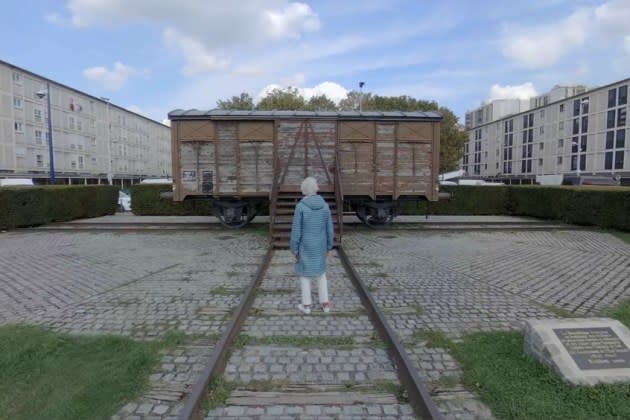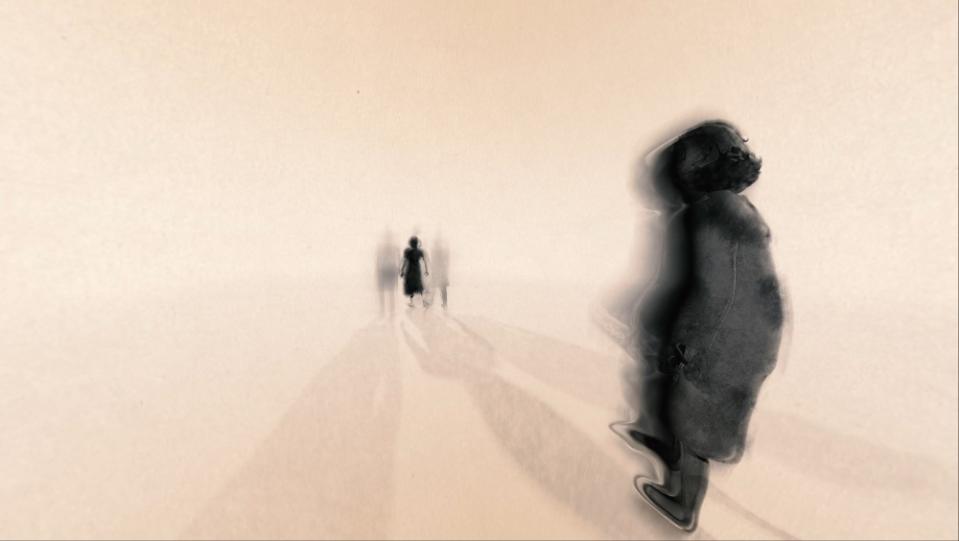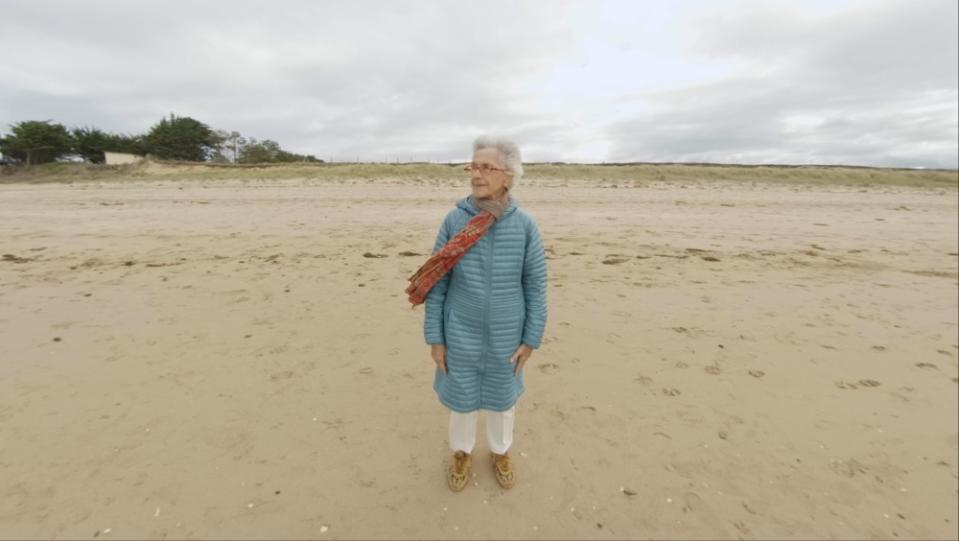Immersive Holocaust Doc ‘Letters From Drancy’ Uses New Media to Honor Survivors

In many ways, “Letters From Drancy” has hewed a prestigious if unremarkable path. The VR doc premiered at last year’s Venice Immersive before additional festival slots at the BFI London Film Festival, South by Southwest and now the NewImages Festival in Paris. In other ways the title is all too uncommon – as it was one of three films commissioned by the Illinois Holocaust Museum & Education Center, where it is now on permanent display.
The wrenching film follows survivor Marion Deichmann as she returns to her native France to retrace both family tragedy and her own path to safety. Produced by East City Films, “Letters From Drancy” is part of a trilogy that uses new-media tools to shine light on these tales. Other films include “Walk to Westerbork” and “Escape to Shanghai.”
More from Variety
Emphasizing Connection Over Competition, NewImages Is 'Not Another Film Festival'
Paris Immersive Showcase NewImages Builds Bridges With Empathy, Engagement
The film also crystalizes a major theme of this year’s NewImages, showing how an affecting and artistically accomplished work might find an ideal distribution and exhibition berth on the museum and educational circuit.
Variety spoke with the Illinois Holocaust Museum & Education Center’s Kelley Szany.
What drew you to new media?
Over the past five years, our museum has really doubled down on this question of how to capture, preserve, and share survivor stories, especially as we move further away from the Holocaust. After launching Dimensions in Testimony with the USC Shoah Foundation in 2018 we then wanted to explore new technologies to share those stories. And, for us, that was virtual reality.
Why VR in particular, and why this focus on what you call ‘lesser known’ stories?
Very few museums were using it to share historical stories, and so we wanted to do something a little bit different. Of course, we also realized that 90% of our visitors in Chicago, Illinois aren’t going to get to these sites. So being able to go to Auschwitz with real survivors or to stand in Drancy with Marion makes for a connection to this history that we knew could be really profound, particularly for our younger visitors.
We had initially had done two films with two Auschwitz survivors, and the reception was strong. We actually built a permanent exhibition space at our museum for these VR films, and then we wanted to do more, but this time to focus on less covered stories, like sites in Western Europe, or the Jews that went to Shanghai. And in particular we wanted to focus on children’s experiences. They saw, they hurt, and they experienced the trauma of war and of genocide [like everyone else].

How have you experienced the film?
I’ve watched “Letters From Drancy” more times than I can count. Even though the story is now 80 years in the past, the film immediately connects you to this universal experience of love and family and loss, of strength, courage and resilience that comes from surviving something traumatic, and of the hope that our parents are proud of us. We can all connect with that in a way that maybe isn’t as expected with such a difficult history. But we find a connection in the human being, and ultimately in a human story.
What are your further plans?
These three new films opened this past summer, and we now have rolled out what we call our mobile VR trunk program. So we have steamer trunks full of 10 MetaQuest 2 wireless headsets preloaded with these films that we’re now shipping out, either 10 or 20 at a time, to schools across the country so that they, too, can experience these films inside the classroom or in libraries or community centers.
Of course, the film has also led a parallel life on the festival circuit. How has that experience gone?
The reception, particularly for “Letters,” has blown us away. It’s been really impactful to see every screening sold out, and more importantly, to see people lining up to talk to Marion and to [“Walk to Westerbork” narrator] Rodi [Glass]. Since the films have been released, we’ve unfortunately lost [“Escape to Shangai” subject] Doris [Fogel], which also affirms the importance of capturing these films now while we can. But in some ways, our survivors have been celebrated and have become celebrities themselves. Just being able to sit with history, both in virtual reality and then with the actual person, has been really profound. Especially given the state of the world right now.
What message would you send to other museums curious about VR?
Many museums are still wary of the technology, especially here in the U.S. But VR and AR both have incredible potential to connect visitors with especially difficult topics and histories through this vessel of empathy. It’s a profound empathy machine, especially for these more difficult stories. [Only in order for that work] your project has to come from a place of authenticity, telling a personal story and letting the viewers come to their own connections and draw their own lessons. Don’t try to shock and awe, instead let that come naturally.
Do you think you’ll try this again?
Oh yes. We’re looking for more VR films to bring to our visitors, more stories to share. If it’s out there, we’re interested. We’re already talking about what’s next, because being at these festivals has shown us how much more we could accomplish with these films and how much further this storytelling technology can go. We’re already thinking up ways to integrate this technology into our core exhibits. What might that next film look like for our visitors? Of course, there will always be a place for your standard exhibits, but today’s museums have to meet their visitors where they are.

Best of Variety
Sign up for Variety’s Newsletter. For the latest news, follow us on Facebook, Twitter, and Instagram.

 Yahoo Movies
Yahoo Movies 
